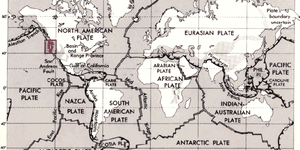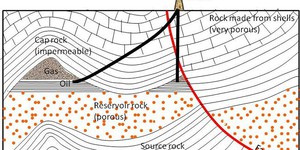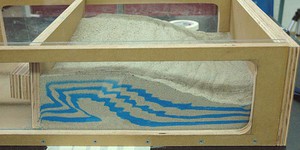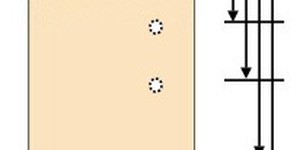Geology Science Projects (43 results)
Geologists study the Earth, trying to understand the forces that gradually shape and change the landscape and ocean floor, as well as forces that make themselves felt more suddenly, like earthquakes and volcanoes. The information geologist discover helps in many ways, from keeping populations safe from disasters like landslides to uncovering important ore deposits like titanium used for surgical equipment.
|
Select a resource
Sort by
|
Minerals are sometimes precious, like diamonds. But most minerals are very common, like sodium, which is found in salt. How are minerals found and identified? How are our mineral resources distributed? Visit the USGS Mineral Resource Program to find mineral resources in your state. How are satellite images used to identify potential mineral sources? You can also find out how minerals are identified using spectroscopy. How are potentially harmful minerals, like mercury, dealt with? Visit the…
Read more
Featured
Have you heard that garlic powder is supposed to inhibit the growth of bacteria? Which do you think would make a better disinfectant: a solution of garlic powder or a solution of bleach? This project shows you a straightforward way to compare the effectiveness of different disinfectants (or other antimicrobial agents), by measuring zones of inhibition on a culture plate.
Read more
Soils are made of particles of different types and sizes. The space between particles is called pore space. Pore space determines the amount of water that a given volume of soil can hold. Porosity is the percentage of the total volume of soil that consists of pore space. Compare the porosity of different types of soil. Which types of soil hold the most water? Can you see this under a microscope?
Read more
The Ring of Fire is a region of volcanic and earthquake activity that surrounds the Pacific Ocean. In this project you can explore the connection between plate tectonics and volcanic activity by mapping historical data.
Read more
Today it is widely accepted that the Earth's crust consists of a series of huge plates that slowly move. The low parts of the plates are beneath the world's oceans, and the high parts of the plates are landmasses. New plate material is generated at deep sea ocean ridges in a process called sea-floor spreading. Material from plates is also recycled at trenches, where dense, oceanic crust dives back (subducts) underneath an adjacent plate towards the upper mantle. Figure 1 shows a map of the…
Read more
You may have heard the expression, "You can't get blood from a stone." But what about oil? Can you get petroleum oil from a stone? In this geology science fair project, you'll find out what kinds of stones make the best storage rocks for oil. You'll see which ones can soak up oil like a sponge, and which ones cannot soak up oil or let it pass through, but can act as a "cap" to contain the oil in secret underground traps. Can a hard rock really act like a soft sponge... maybe SpongeBob…
Read more
What variables contribute to the properties of the soil in an area? Investigate the role of climate, weather, topography, time, parent material, vegetation, and biological and chemical agents on soil formation. How are soils characterized? There are 3 basic particle sizes which create three basic soil types: sand, silt, and clay. Investigate the properties of the three different types of soil by observing grain size, shape, hardness, color, chemical composition, pore space, aeration,…
Read more
Here's a project that involves a different kind of sandbox than the ones you usually think of. This one has a moving wall inside, acting like a piston, to compress the sand. You can make layers using two different colors of sand, and then see what happens when you compress the layers with the piston. If you're handy with woodworking tools, this is a good project to give you a feel for the effects of geological forces that deform the Earth's crust.
Read more
This project shows you how to build a simple model system to simulate underground water flow. Underground water flow is important for understanding replenishment of underground aquifers, migration of underground contaminant plumes, and cave formation. With your model system, you can simulate various underground conditions, and test your predictions about the effects they have on water flow.
Read more
Did you know that waves travel through the Earth's crust all the time? One major source of these waves is earthquakes, although ground motion can also be caused by something man-made, such as a mine blast or nuclear explosion, or other natural events, such as landslides or volcanic activity.
How does an earthquake cause these waves? The entire outer shell of the Earth, known as the lithosphere, is made up of tectonic plates that are constantly moving. There are seven or eight large…
Read more
The same principles of geology that we use to investigate the Earth can also be applied to other planets. Visit the Astrogeology Research Program at the USGS to find out how information about the geology of other planets can be gathered (USGS, 2006). Can you make a map or model of another planet? What minerals are found on other planets? Which planets have similar composition to the earth? What kind of geological forces occur on other planets? Do other planets have earthquakes, landslides…
Read more
|
Explore Our Science Videos
Matchstick Rockets
DIY Rubber Band Paddle Boat
Marble Machine: 2016 Engineering Challenge










